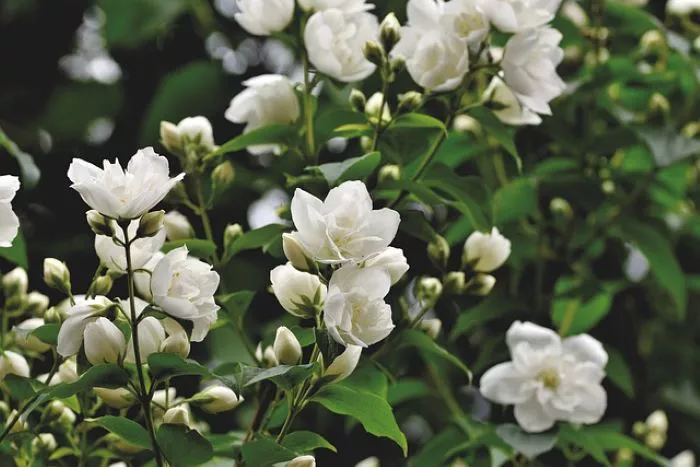Jasmine is a beloved flowering plant known for its fragrant blooms and lush foliage. It is often used in gardens, landscapes, and as a houseplant. To enjoy the beautiful flowers and their delightful scent, it is essential to understand how to encourage jasmine to flower. This article will explore the factors that influence flowering in jasmine, including light, water, soil, and pruning. We will also discuss common challenges and solutions to promote healthy blooms.
Understanding Jasmine Plants
Jasmine belongs to the genus Jasminum, which includes over 200 species. These plants are native to tropical and subtropical regions, which means they thrive in warm climates. Jasmine can be grown as a vine, shrub, or small tree, depending on the species. The most popular types of jasmine for cultivation include common jasmine (Jasminum officinale), Arabian jasmine (Jasminum sambac), and winter jasmine (Jasminum nudiflorum).
Jasmine plants are known for their small, star-shaped flowers that can be white, yellow, or pink. These flowers are not only beautiful but also highly fragrant, making them a favorite for gardens and indoor spaces. To achieve abundant flowering, it is crucial to provide the right growing conditions.
Light Requirements
Light is one of the most critical factors for jasmine to flower. Jasmine plants require plenty of sunlight to produce blooms. Ideally, they should receive at least six hours of direct sunlight each day. Insufficient light can lead to weak growth and fewer flowers.
If you are growing jasmine indoors, place it near a south-facing window where it can receive ample sunlight. If outdoor conditions are not ideal, consider using grow lights to supplement natural light. For outdoor jasmine, choose a location that is sunny and sheltered from strong winds.
Watering Practices
Proper watering is essential for healthy jasmine plants. Jasmine prefers consistently moist soil but does not tolerate waterlogged conditions. Overwatering can lead to root rot, while underwatering can stress the plant and reduce flowering.
To determine when to water, check the top inch of the soil. If it feels dry, it is time to water. Water the plant thoroughly until excess water drains from the bottom of the pot or the ground. During hot summer months, jasmine may require more frequent watering. In contrast, reduce watering during the dormant winter months.
Soil Conditions
The right soil is crucial for promoting jasmine flowering. Jasmine thrives in well-draining soil that is rich in organic matter. A mix of potting soil, compost, and perlite or sand can create an ideal growing medium. This type of soil allows for good drainage while retaining moisture.
If you are planting jasmine in the ground, amend the soil with compost or well-rotted manure to improve fertility. Jasmine prefers slightly acidic to neutral soil with a pH range of 6.0 to 7.0. Conducting a soil test can help determine the pH and nutrient levels, allowing for appropriate amendments.
Fertilization Techniques
Fertilization plays a vital role in encouraging jasmine to flower. Regular feeding helps provide the nutrients necessary for healthy growth and abundant blooms. Use a balanced, slow-release fertilizer during the growing season, typically from spring to early fall.
Apply fertilizer according to the manufacturer’s instructions, as over-fertilization can harm the plant. A fertilizer high in phosphorus can be particularly beneficial for promoting flowering. Look for a fertilizer with a higher middle number in the N-P-K ratio, such as 10-20-10.
Pruning for Better Blooms
Pruning is another essential practice for encouraging jasmine to flower. Regular pruning helps maintain the plant’s shape and encourages new growth, which is where flowers develop. The best time to prune jasmine is in late winter or early spring before new growth begins.
When pruning, remove dead or damaged stems and any weak or overcrowded growth. This will improve air circulation and allow more light to reach the inner parts of the plant. Additionally, cutting back older stems can stimulate new growth and increase flower production.
Temperature and Humidity
Jasmine plants thrive in warm temperatures and moderate humidity. Most jasmine species prefer temperatures between 60°F and 75°F (15°C to 24°C). Extreme temperatures, especially cold drafts, can hinder flowering. If growing jasmine indoors, keep it away from cold windows and heating vents.
Humidity is also important for jasmine. These plants appreciate higher humidity levels, especially when grown indoors. To increase humidity, consider misting the leaves or placing a humidifier nearby. Grouping jasmine with other plants can also help create a more humid microclimate.
Common Challenges
Despite providing the right conditions, jasmine may still face challenges that affect flowering. Pests such as aphids, spider mites, and whiteflies can damage the plant and hinder blooming. Regularly inspect the leaves and stems for signs of pests. If detected, treat the plant with insecticidal soap or neem oil.
Diseases such as powdery mildew can also affect jasmine. This fungal disease thrives in high humidity and poor air circulation. To prevent powdery mildew, ensure good airflow around the plant and avoid overhead watering. If necessary, apply a fungicide to control the spread of disease.
Conclusion
Getting jasmine to flower requires attention to various factors, including light, water, soil, and pruning. By providing the right conditions, gardeners can enjoy the beauty and fragrance of jasmine blooms. Understanding the specific needs of jasmine plants is essential for successful cultivation. With proper care, jasmine can thrive and produce abundant flowers, enhancing any garden or indoor space. Protecting these plants from pests and diseases further ensures a healthy, flowering jasmine that can be enjoyed for years to come.


